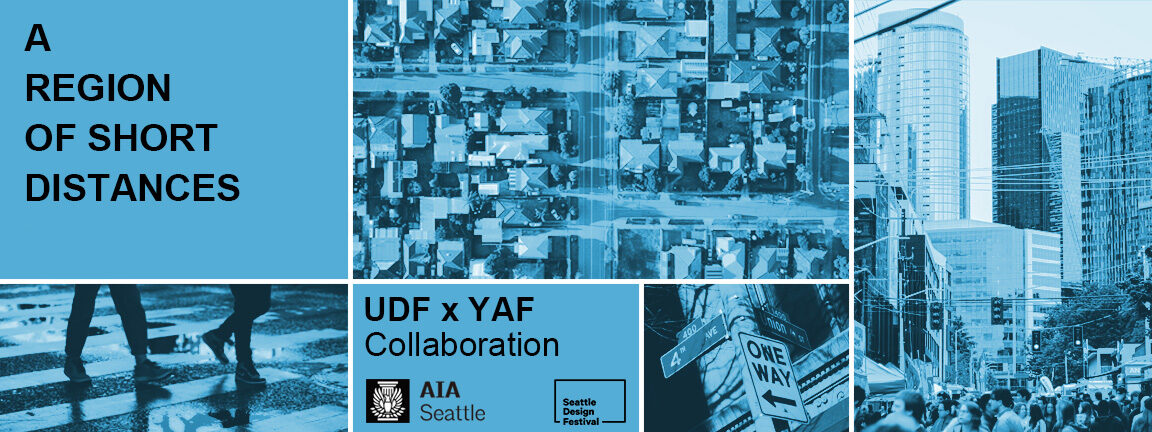

-
0,
- 23 0,
ZOOM, Online, Seattle WA
Presented by:
Join us for Towards a Region of Short Distances, a 2-hour virtual panel discussion.
Team: Elijah Coley, Adam Bettcher, Lisa Awazu Wellman
Before the Second World War, central Puget Sound cities grew around neighborhood nodes that were naturally limited to walkable radii around transit access. Development after the 1940s prioritized automobile mobility. Automobile dependence became a hallmark of late-20th and early-21st century American life, and the Seattle metro area is no exception.
Much of the area within the central Puget Sound Urban Growth Area is auto-dependent. Strip-mall highways surround miles of cul-de-sac subdivisions in suburbs such as Mill Creek and Maple Valley. Even some older neighborhoods within Seattle city limits such as Laurelhurst, View Ridge, Magnolia, and Beacon Hill have vast areas that are not conventionally walkable due to single-use neighborhoods, highways, and terrain. As we densify without improving walkability, automobile dependence increases, and further strain is placed on our infrastructure.
As we move toward independence from automobiles, the structure of our urban environment must change so that no urban places are dependent on the automobile. In a post-coronavirus world, this strategy of short distances is important for public health to reduce the viral transmission that naturally occurs at large, amalgamated suburban centers.
How do we incrementally reshape our region to eradicate urban automobile dependency? A “City of Short Distances”, in which most needs of daily life are a short walk or bike-ride away, is the logical path forward for our region. Through this panel discussion, we seek ideas that explore seeding areas of the greater Seattle region plagued by poor walkability with incrementally developed “microneighborhoods” at walkable intervals to restructure our region. We will be joined by the jurors of our larger design competition and hope to showcase some of the work submitted. Join us to discuss the past, present, and future of Seattle’s urban structure.
Capacity: 500
Learn more about the competition that inspired this panel. Please note that the competition submission deadline has been pushed back to September 25, 2020.







